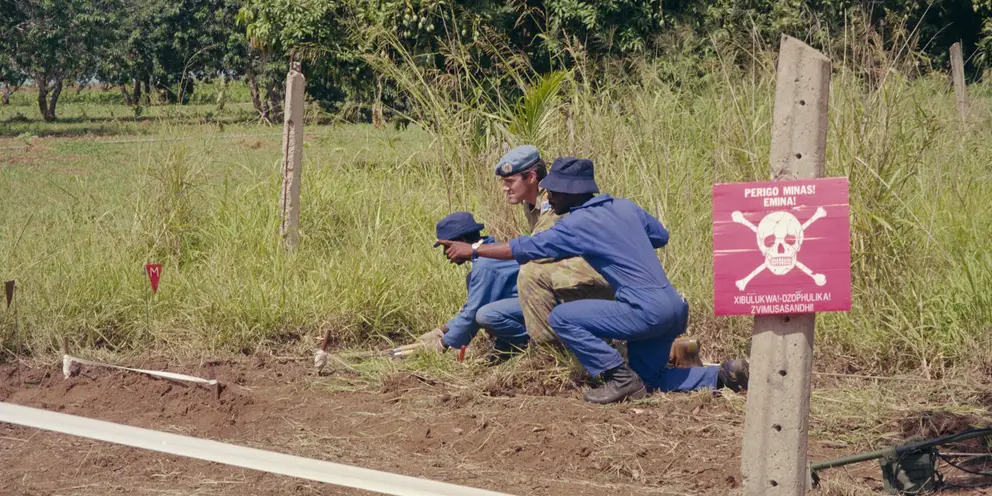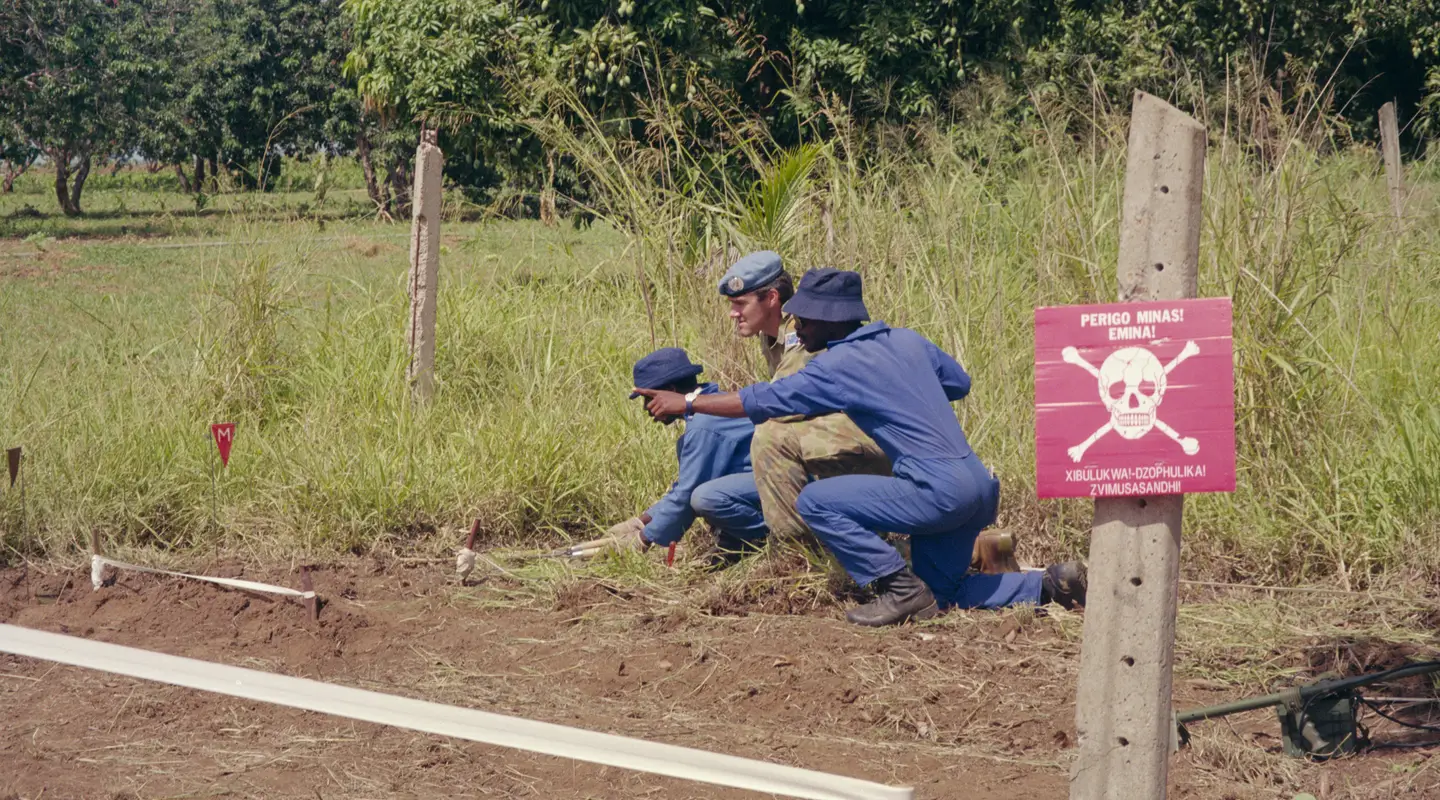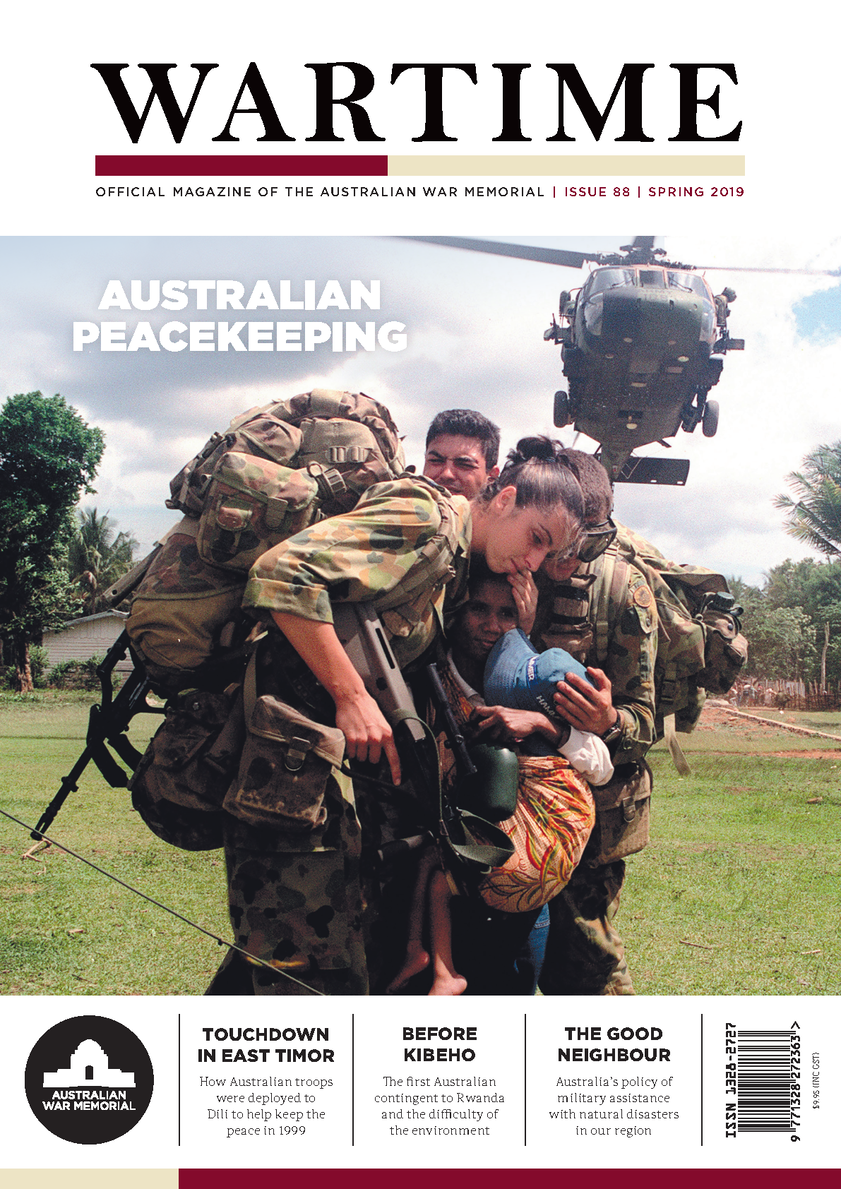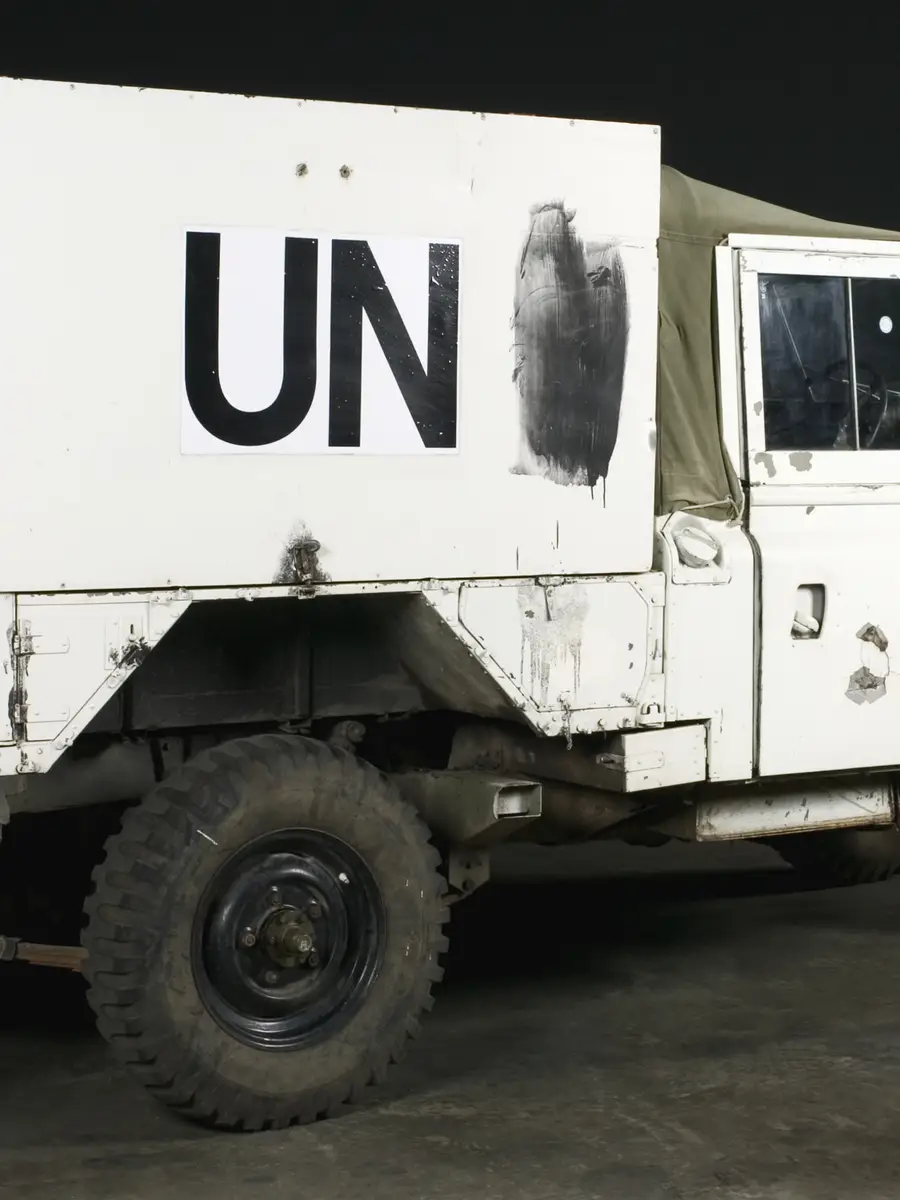In 1994, Major Peter Clay filmed this home movie - an extremely rare, personal account of the life of a peacekeeper in the field.
Communicating with loved ones while on deployment has changed rapidly over the past 25 years. In 1994 Major Peter Clay (now Brigadier retired) made a home movie while he was deployed to Mozambique to send to his wife Christine and other family members. In the peacekeeping mission ONUMOZ, Clay was the commander of the first Australian contingent, Operation Coracle, from August to December 1994. Their mission was to teach at the Mine Clearance Training Centre following the end of the country’s 17-year civil war.

Major Peter Clay in the field while on deployment in Mozambique, Africa. AWM P12622.012.003
The only guaranteed way to communicate home was via the Inmarsat communications system. The system was rudimentary by today’s Defence standards. It came in two cases: one held the electronics and the other a satellite dish. The dish had to be pointed at the correct angle toward the Indian Ocean to send a beam back to Australia to carry phone calls. The call to family was limited to just three minutes, every two weeks. To show his family what it was like living in Tete, the capital city of Tete Province, Clay filmed himself and the mission over the course of a day.
In his film, Clay sets the camera up on a sandbag as he introduces Mozambique and gives a brief history. It is 6.30 am on a day in November 1994, with the heat set to reach 45 degrees. At the training centre he shows us the deminers going through their practical course revision. Red and green sticks mean there are mines present. Clay introduces the group of United Nations staff with whom he is working, and what their roles are. We are able to see what the civil war has done to this country and the difference ONUMOZ is making.
Excerpt from footage recorded by Peter Clay
Good morning. Hello there to Chrissie, my Chrissy of course, Mum, Liz and Mick, Dave and Melita, Rob and Chrissy and anybody else who happens to be watching. This is television, Mozambique style.
There is your de-miner. Standing in the lane he's cleared so far.
The piece of wire that's in his hand is what's known as a tripwire feeler. And he's not doing some sort of weird sort of Tai Chi. In fact he's trying to feel for any of the very very fine tripwires which could be located somewhere in the lane in front of him.
Once he's felt with the tripwire, then he clears the area with his mine detector. And that's basically what he does. Also with prodding which you may see shortly.
For hundreds of kilometres throughout Mozambique. It's a long long process.
These are de-miners from another course who are currently moving out to the training area. Got little bags with all their demining equipment on them.
[machine makes whirring noise]
Well, so that's the end of the video for Mozambique. I hope you've enjoyed watching it as much as I've enjoyed being over here in the country.
I think it's fair to say that the whole time over here has been a fantastic experience. And whilst it has its highs and low points, overall it's going to be one of the most memorable things that I'm sure many of us do in our careers in the Army.
I'd just like to say goodbye to everyone back home in Australia.
AWM2017.119.1 [detail]
This deployment was a linchpin in Clay’s career. He has commented: “I’ve been to a lot of places around the world, and [in] different operations and environments, but without a doubt that was the most extraordinary and rewarding operation appointment that I’ve had in my career.” It was this deployment that later led Clay to significant commands in both Iraq and Afghanistan.
This home movie is an extremely rare piece of footage, a personal account of the life of a peacekeeper in the field. It is a true asset to the Memorial’s National Collection and the full version may be seen at AWM2017.119.1 and also featured in the Memorial’s exhibition, The Courage for Peace.



![Movie still from They serve that men may fly [AWM F10244]](/sites/default/files/styles/rollup/public/images/2025-03/40-f10244-00-22-55-23.jpg.webp?itok=hWkkw2gv)